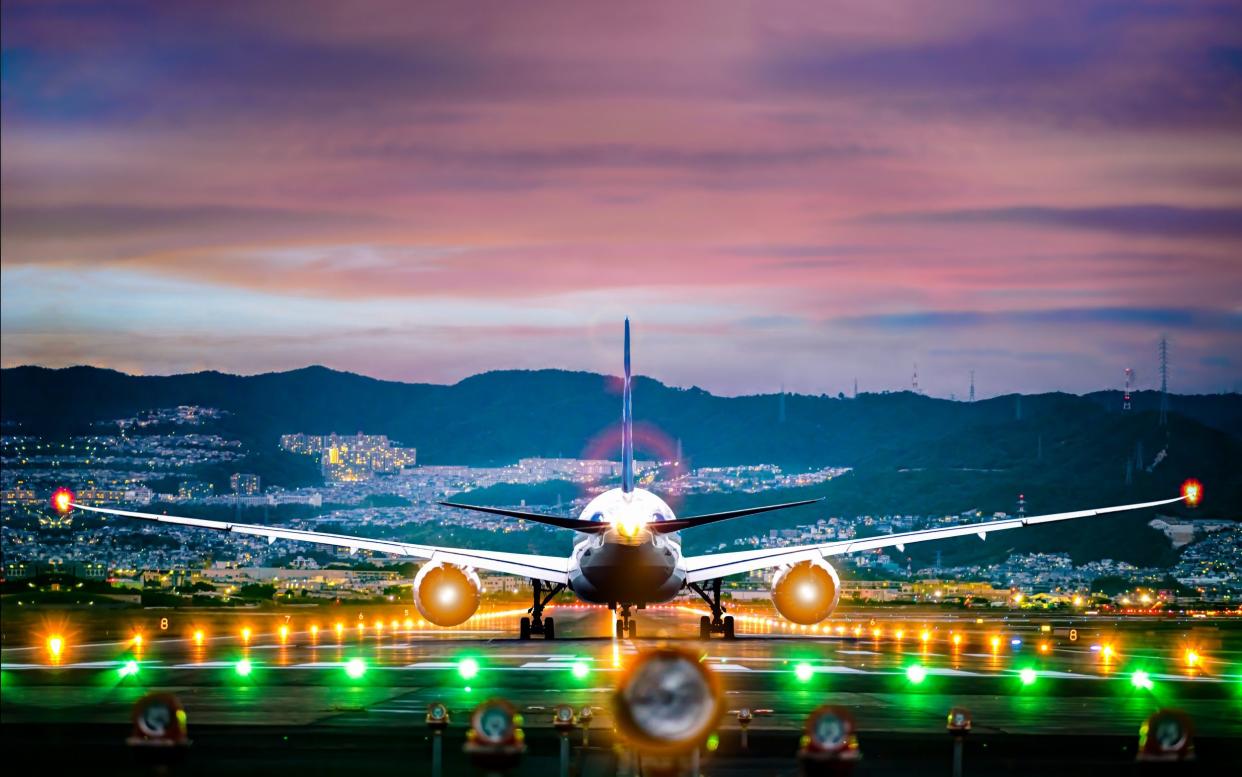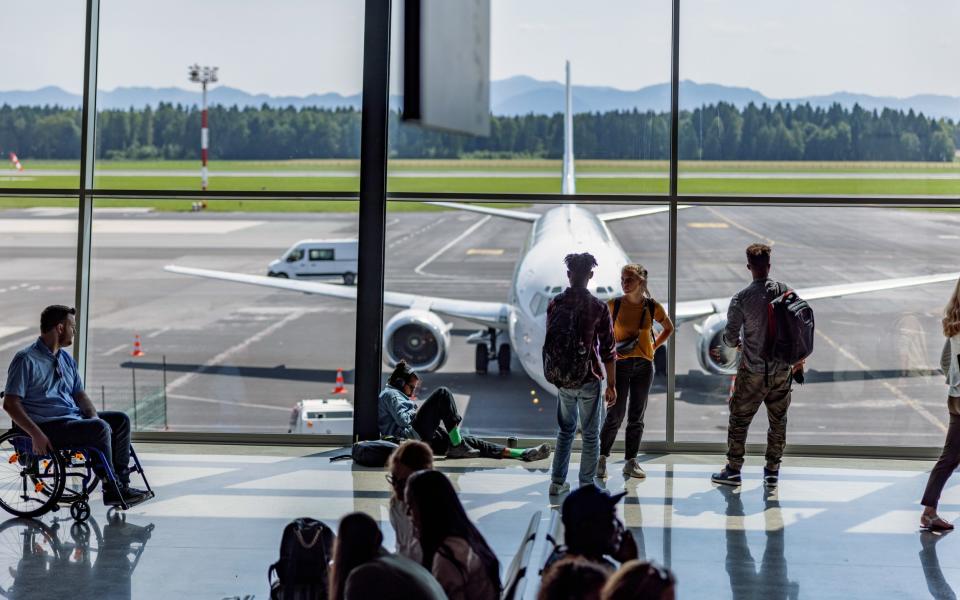Watch as plane spins out of control in 100mph winds

Footage has emerged of a parked passenger plane in Argentina spinning out of control during a storm, and colliding with a staircase.
The incident occurred on Sunday as a severe storm and 100mph winds hit the Aeroparque Jorge Newbery airport in Buenos Aires. The footage then shows a staircase and other airport equipment being blown across the tarmac at speed.
In a statement, Aerolineas Argentinas said: “Due to the strong storm that mainly affected the operation of Aeroparque, 100 flights have been cancelled so far, and the same number have suffered delays and rescheduling.”
The aircraft sustained damage and its next scheduled flight was cancelled while the plane was grounded for repairs.
This is an example of the sort of earthside danger travellers barely think about – but which ground staff are extensively trained for. The rare, fiery ways a plane can fail mid-flight might worry the imagination more, but it’s on the runway where incidents and human error tend to occur most frequently.
Runway incursions
A study by US transport authorities noted that runway incursions – when an aircraft, vehicle or person is incorrectly on the runway – have increased over time (some 1,756 were reported at US airports in the last year).
Michele Robson, an aviation expert at Turning Left For Less, thinks complicated runway layouts can exacerbate the risk. Incidents involving vehicles are “very rare in this country,” she says, “but happen more in other parts of the world.” Large airports like Chicago O’Hare are more difficult to navigate: vehicles can unintentionally end up in the way of a taxiing plane, or a pilot could find themselves lost.
Long-haul pilot Charlie Page says that he is constantly looking out for such infractions. “We have to be so aware of all the potential hazards,” he says. “We’re absolutely focused, building up a 3D picture of the area in our minds at all times.”
In fact, an investigation by the Chicago Sun Times found that five members of airport staff have been reprimanded for such incursions since 2020. In one incident, a vehicle was driven into a “runway safety area”, remaining there while a Korean Air jetline “overflew” it. A different employee was suspended after inadvertently driving onto the runway and causing an aborted landing.
In both of these incidents, all passengers and staff emerged unharmed. But Robson points out that unknown runway layouts, and poor visibility more generally, can lead to much more dangerous scenarios.
A consequential accident
Such incidents are now extremely rare, as a result of one particularly horrifying incident. In 1977, a KLM flight initiated its takeoff at Tenerife airport in dense fog, while a Pam Am flight was, unbeknownst to the pilot, still on the runway. The planes collided, resulting in the deaths of 583 people. It was the deadliest non-terrorist related aviation disaster in history.
As a consequence of the accident, a whole range of new procedures were instigated to aid air traffic controllers and pilots. The use of English was emphasised as a common working language, and standard phrases, like “hold position”, were introduced for clarity. Cockpit procedures were also tightened – there was some speculation that staff on the KLM plane felt unable to challenge the well-respected pilot, who appeared to take off without clearance. Flight crew are now explicitly trained to dispute decisions regardless of seniority.
Procedure for reduced visibility, such as that experienced in the Tenerife disaster, has also developed. “Things like pilots getting lost, or other vehicles on the runway, now get picked up by radar surface movement devices,” says Robson. “Even if there’s bad visibility, a controller can see everything on what looks like a radar display. So if someone comes the wrong way, they don’t have to be looking out the window the whole time, it’s there on the screen.”
Another recent event occurred at Stansted. A Ryanair plane, travelling from Luxembourg, collided with a ground vehicle as it was taxiing to the gate. Footage shows the ambulift – a mobility assistance device used by disabled passengers – approaching the plane, before stopping and attempting to reverse.
The action is evidently misjudged. The top of the vehicle is clipped by the aeroplane’s wing, seemingly resulting in damage to the aircraft.
Due to the relative slow speed of vehicles involved, incursions like the one at Stansted are not a serious threat. Passengers should still have seatbelts on, and the body of the plane is considerably more resilient than a ground vehicle. Stranger, more social-media friendly incidents, like the much-shared video of a JetBlue plane tilting backwards, might feel like worrying incidents of on-the-ground danger. Really, though, the risk to passengers is very low.
Runway excursions
The runway can, however, become a more dangerous place during incidents like that seen at Leeds Bradford airport last month, when a Tui plane “skidded off the runway” in heavy rain. Again, passengers managed to leave the plane unharmed.
Excursions – when an aircraft veers off or overrun off the runway surface – are a particular threat. The International Air Transport Association declared them “the most frequent type of accident” in its 2022 Safety Report. Two years prior, 24 fatalities, 77 serious injuries and six cases of substantial damage to the aircraft were attributed to excursions. The risk to life is, clearly, a frightening one, but airlines are also particularly wary of their expense. Swiss consultancy firm Safe-Runway GmbH estimates that the direct cost of runway excursion events is around $4 billion per year.
Passengers – and the operator – were fortunate that the Tui plane did not break up during the excursion. Several such incidents have resulted in serious injury, and often extreme damage to the aircraft. In 2000, Southwest Airlines Flight 1455 overran the runway at Burbank airport due to wet weather. It crashed through a perimeter wall, finally skidding to a stop outside a gas station. Luckily, everyone survived, but the aircraft was written off. It was the first major accident in the airline’s history.
Other excursions have proved more deadly. In 2020, a Pegasus Airlines flight overran the runway while landing at Istanbul-Sabiha Gökçen International Airport in poor weather conditions, and broke into several pieces. Three passengers were killed.

Airport mitigation
Still, aviation accidents in general remain rare, and they are decreasing. Airports use remarkably-named tools, like Skidometers, to measure runway friction and monitor water levels, meaning weather conditions are closely tracked. And while it often seems dramatic, pilots are able to react to any perceived danger on the ground right until the moment of landing.
“If there’s another plane or a vehicle on the runway, a pilot will abort the landing,” says Robson. “The same thing could happen if the runway surface was deemed unsafe. A pilot might even touch the wheels down, before putting on full power and climbing back up to a certain altitude because they’re not happy with the conditions. Passengers can feel quite alarmed by the sudden shift, but it’s actually a safety measure.”
And while you might be keen to kickstart your holiday as soon as tyres touch tarmac, security concerns remain until the plane has fully stopped. If the Stansted incident reveals anything, it’s that airlines really do mean it when they advise you to keep your seatbelt fastened.

